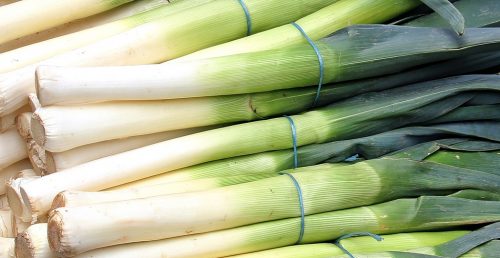Leeks belong to the onion family. There are varieties for summer and winter cultivation. Leeks grown in the summer are thicker and not hardy. Leeks grown in the winter are hardy.
Also known as:
scallion
You are viewing the mobile-adapted version of the page.
The one for tablets, laptop and desktop also provides general information, such as origin and cultivation.
Leeks (Allium ampeloprasum var. porrum). There are varieties for summer and winter cultivation. Leeks grown in the summer are thicker and not hardy. The thinner leeks grown in the winter are hardy. Pre-sow summer leeks in mid-January to mid-February in window sill seed trays. In April/May, the plants can be put in open ground. Early winter leeks – autumn leeks – sow in March in open ground in a seedbed; in June, when the leek plants are as thick as a pencil, transplant to the final spot. Young leek plants can also be purchased at garden centers.
Leeks like nutrient-rich, permeable soil; a little fertilization after the first month stimulates growth. Puddles of rainwater between leek plants increase the chances of rotting.
Leek are attacked by onion flies and leek moths, among others. Protect the leeks with insect netting. Unfortunately, onion fly larvae also emerge from the soil, especially if the soil is light and sandy.
In times of drought, give leeks some water daily. Not only in the soil, but especially in the leek stalk itself: the larvae of the leek moths in the heart of the stalk then drown.
Bugs
Shiny spots on leaf, on the underside are insects: thrips (Thysanoptera).
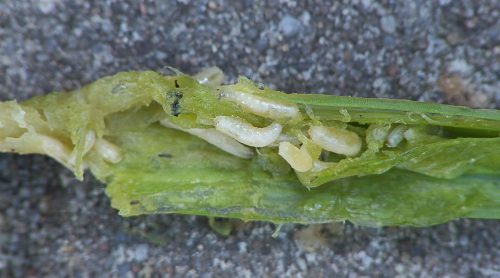
Leaf turns yellow and dies: leek or onion fly (Delia antiqua).
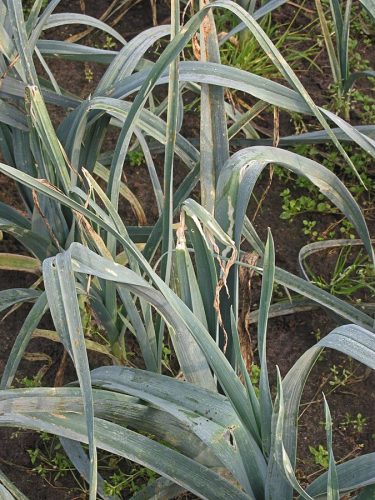
Tunnels and grated leaf surface: leek moth (Acrolepiopsis assectella).
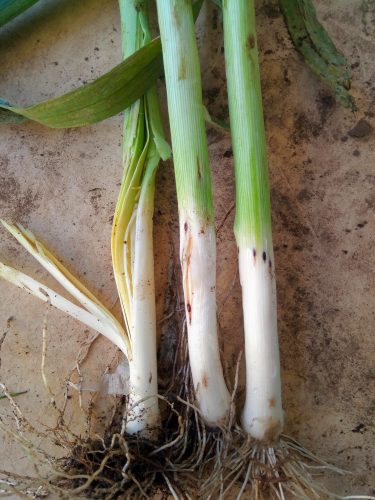
Plants show tunnels in leek stalks and contain brown pupae: Allium leaf miner (Phytomyza gymnostoma).
Pierced roots, tunnels and rust-colored streaks on the root: carrot fly (Chamaepsila rosae).
Fungi & diseases

Orange-brown spores on leek stems: leek rust (Puccinia porri).
Leek leaves start writhing and watery streaks with bacterial slime appear on the stems, leaf tips wither: Bac
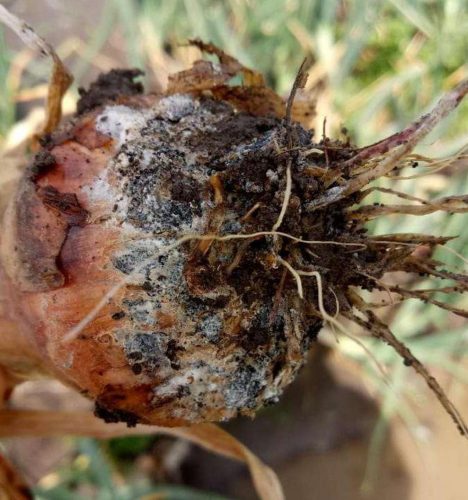
Leaves turn yellow and wilt; lower bulb and roots covered with thick, white mold. There are black spots on the affected parts: onion white rot (Sclerotium cepivorum).
Other
Late spring – april – winter and autumn leek bolt. Harvesting before the end of March prevents flowering.

